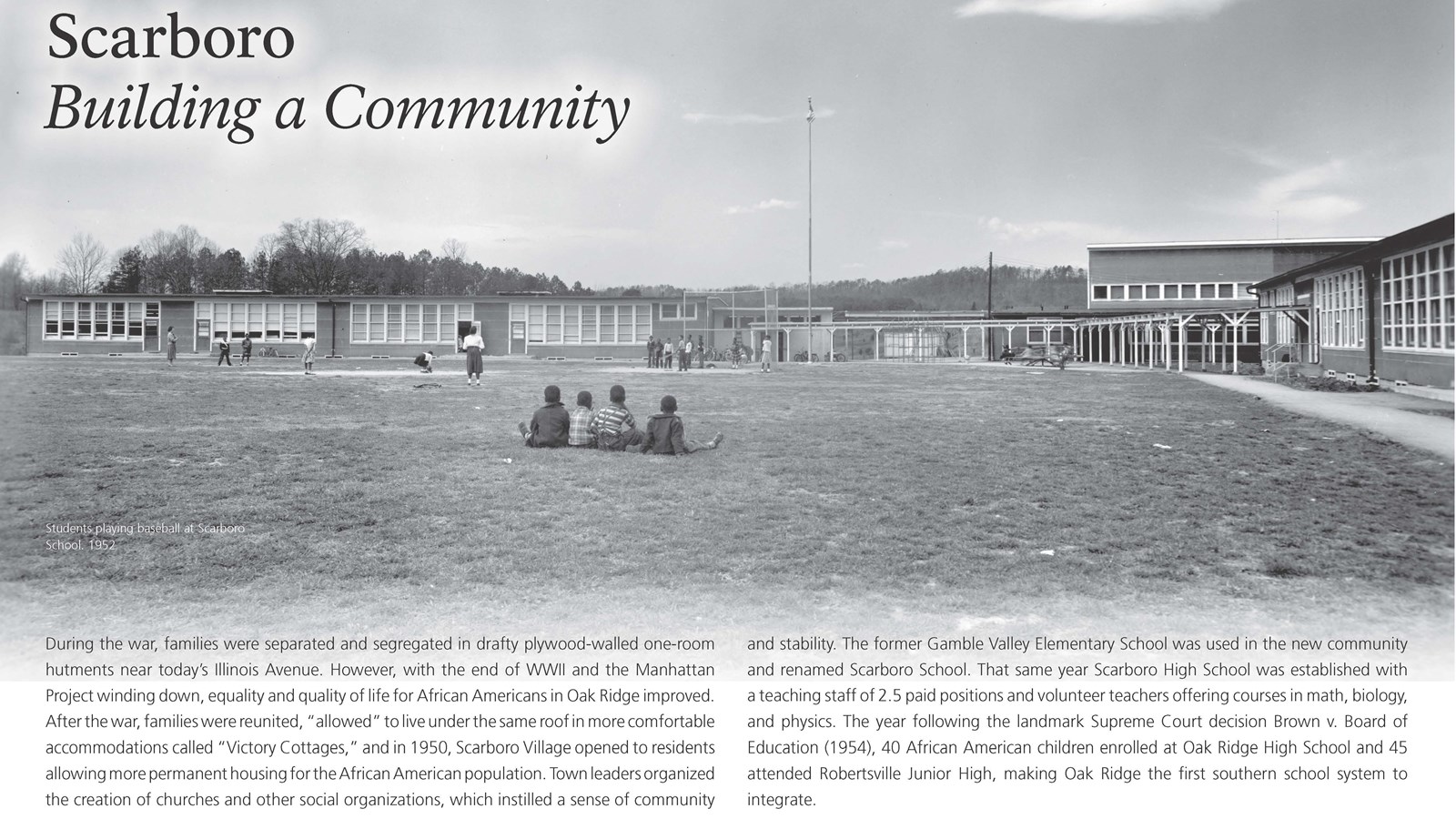Last updated: March 25, 2025
Place
Oak Ridge Wayside: Scarboro

NPS
Quick Facts
Amenities
1 listed
Historical/Interpretive Information/Exhibits
Subtitle
Building a Community
Main Text
During the war, African American families were separated and segregated in drafty plywood-walled one-room hutments near today’s Illinois Avenue. After the war, couples were reunited and allowed to move into housing euphemistically named “Victory Cottages” which consisted of two units. These had slight improvements over the hutments in terms of security and privacy but provided limited space and low-quality amenities. In 1950, Scarboro Village opened without restrictions based on race, which allowed more permanent housing for the African American population. Town leaders organized the creation of churches and other social organizations, which instilled a sense of community and stability. The former Gamble Valley Elementary School was used in the new community and renamed Scarboro School. That same year Scarboro High School was established with a teaching staff of 2.5 paid positions and volunteer teachers offering courses in math, biology, and physics. The year following the landmark Supreme Court decision Brown v. Board of Education (1954), 40 African American children enrolled at Oak Ridge High School and 45 attended Robertsville Junior High, making Oak Ridge the first Southeastern school system to integrate.
Exhibit Panel Description
A black and white exhibit panel on a black frame approximately four feet tall. The panel has a black band at the top and a title underneath that reads “Scarboro: Building a Community." The center of the panel is covered by a black and white photo of students sitting outside a school. The text on the panel is located at the bottom.
Visit This Exhibit Panel
The Scarboro wayside is located at 160 Hampton Rd, Oak Ridge, TN 37830.
Building a Community
Main Text
During the war, African American families were separated and segregated in drafty plywood-walled one-room hutments near today’s Illinois Avenue. After the war, couples were reunited and allowed to move into housing euphemistically named “Victory Cottages” which consisted of two units. These had slight improvements over the hutments in terms of security and privacy but provided limited space and low-quality amenities. In 1950, Scarboro Village opened without restrictions based on race, which allowed more permanent housing for the African American population. Town leaders organized the creation of churches and other social organizations, which instilled a sense of community and stability. The former Gamble Valley Elementary School was used in the new community and renamed Scarboro School. That same year Scarboro High School was established with a teaching staff of 2.5 paid positions and volunteer teachers offering courses in math, biology, and physics. The year following the landmark Supreme Court decision Brown v. Board of Education (1954), 40 African American children enrolled at Oak Ridge High School and 45 attended Robertsville Junior High, making Oak Ridge the first Southeastern school system to integrate.
Exhibit Panel Description
A black and white exhibit panel on a black frame approximately four feet tall. The panel has a black band at the top and a title underneath that reads “Scarboro: Building a Community." The center of the panel is covered by a black and white photo of students sitting outside a school. The text on the panel is located at the bottom.
Visit This Exhibit Panel
The Scarboro wayside is located at 160 Hampton Rd, Oak Ridge, TN 37830.
